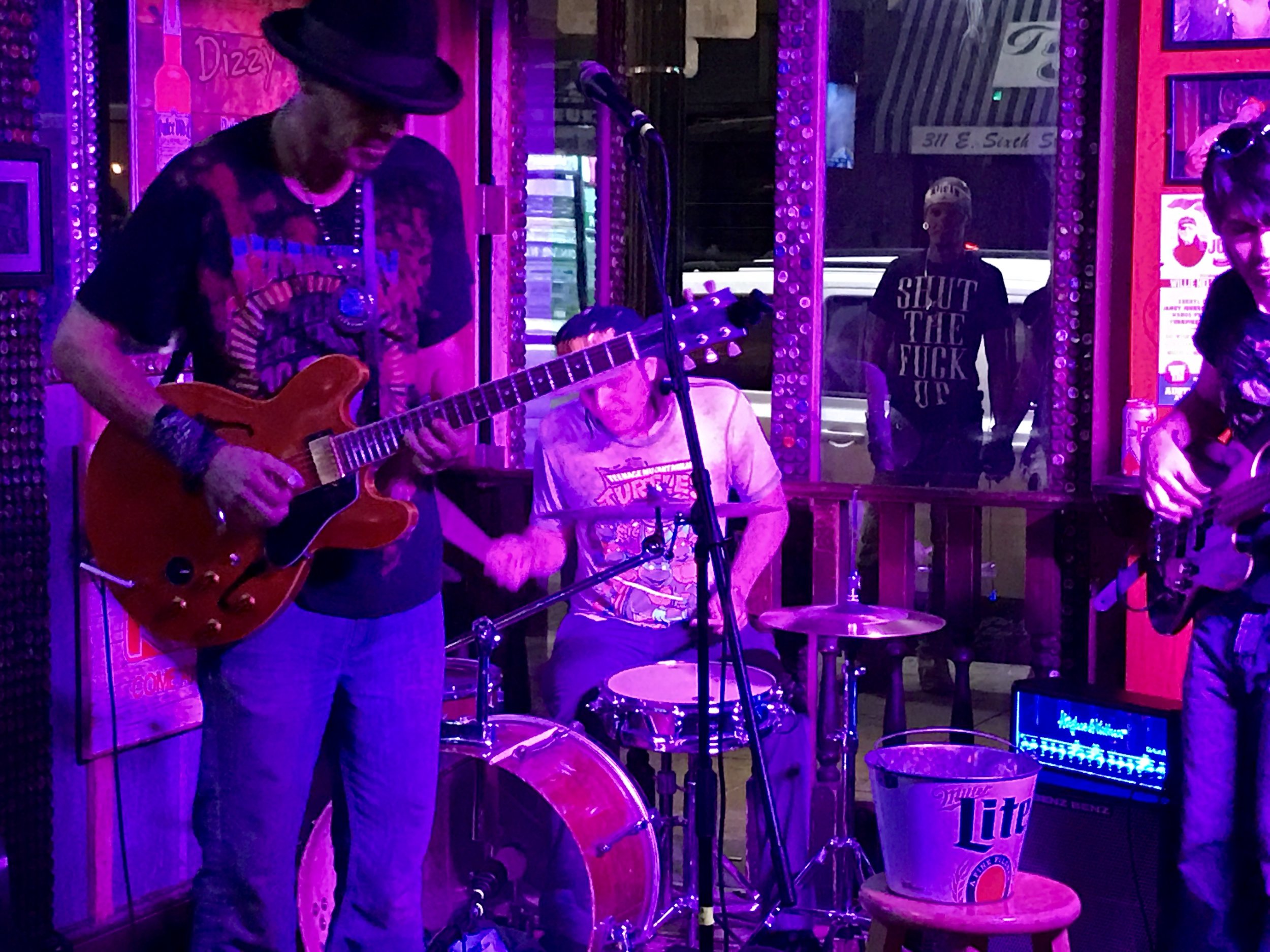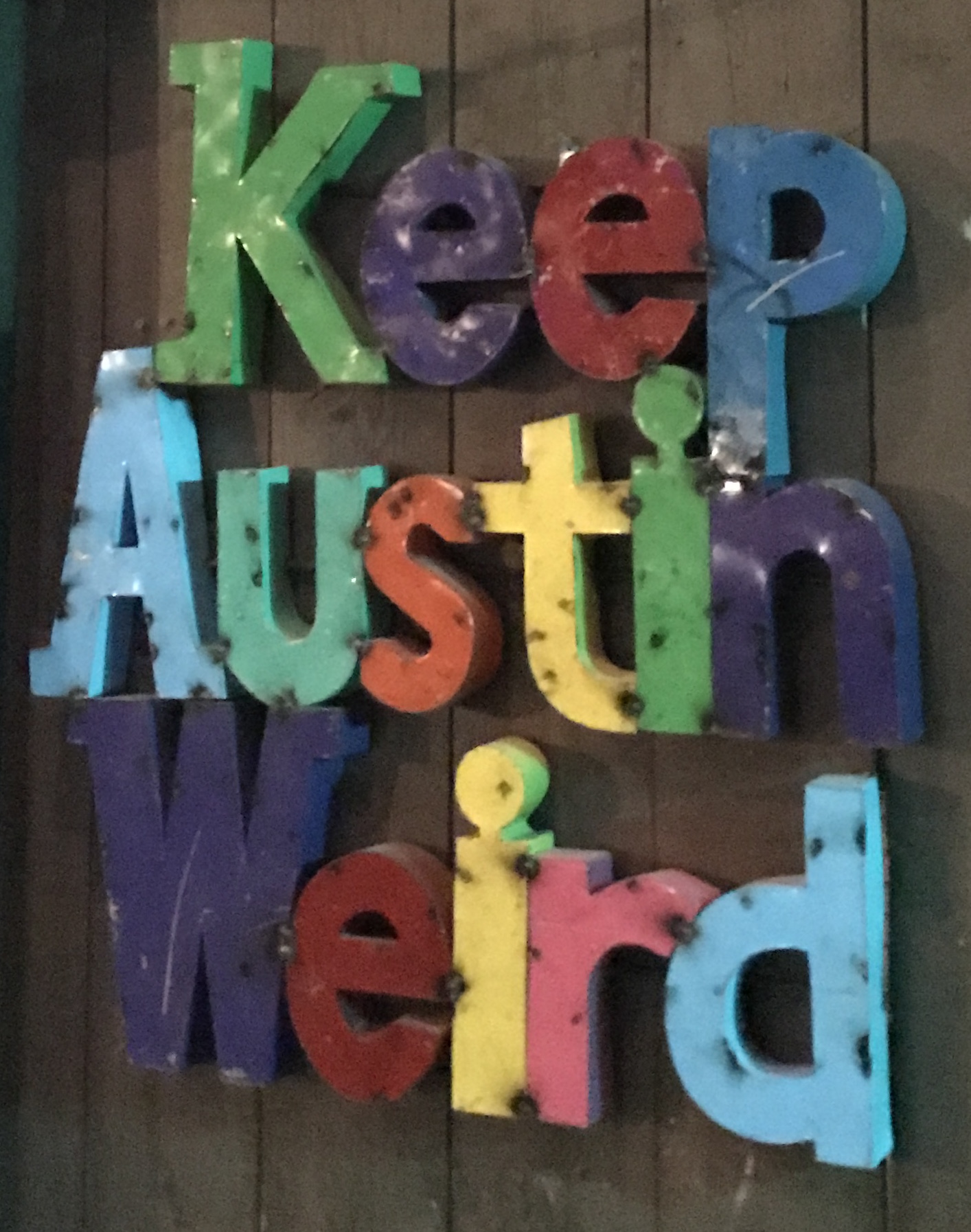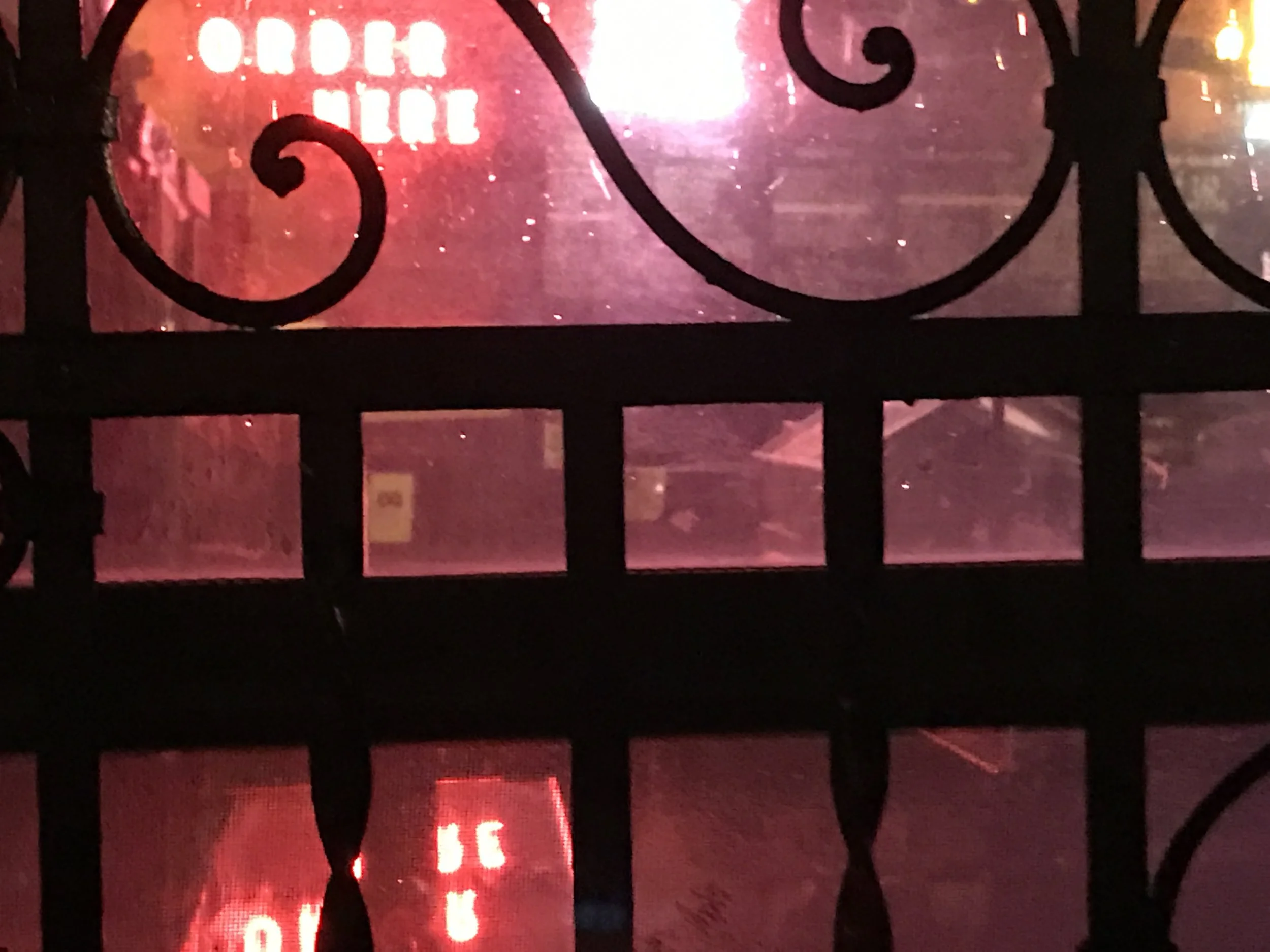It's my third night in Austin Texas and I'm seated at a long mahogany bar, watching heavy rains lash the sidewalk and refract red neon lights from across the road. As usual in America, my neighbour at the bar is talkative and likes English people.
"So you've been up to the Capitol, and to Sixth Street?"
I nod and express my admiration for both of these plus-size attractions. The Texas Capitol, naturally, is bigger than the one in Washington DC, indeed you could stand the Statue of Liberty inside its central dome; Sixth Street is nearly a kilometre of 50+ bars with beer and live music.
My neighbour is a gentleman of retirement age, tanned with white hair combed back, a Western shirt, and an inscrutable expression (think distinguished Bond villain). His flirting with the barmaid marks him out as a regular here.
"Of course Austin is a tech city. You saw the Owl Building right?" he asks. It's a steel-and-glass tower whose curved apex resembles a pair of owl's ears. "Only place in America with Apple, Microsoft, Amazon and Google in the same space."
Although it's my third visit to Texas, I'm still stuck in the cowboys-and-cactuses expectations that lure British tourists over here.
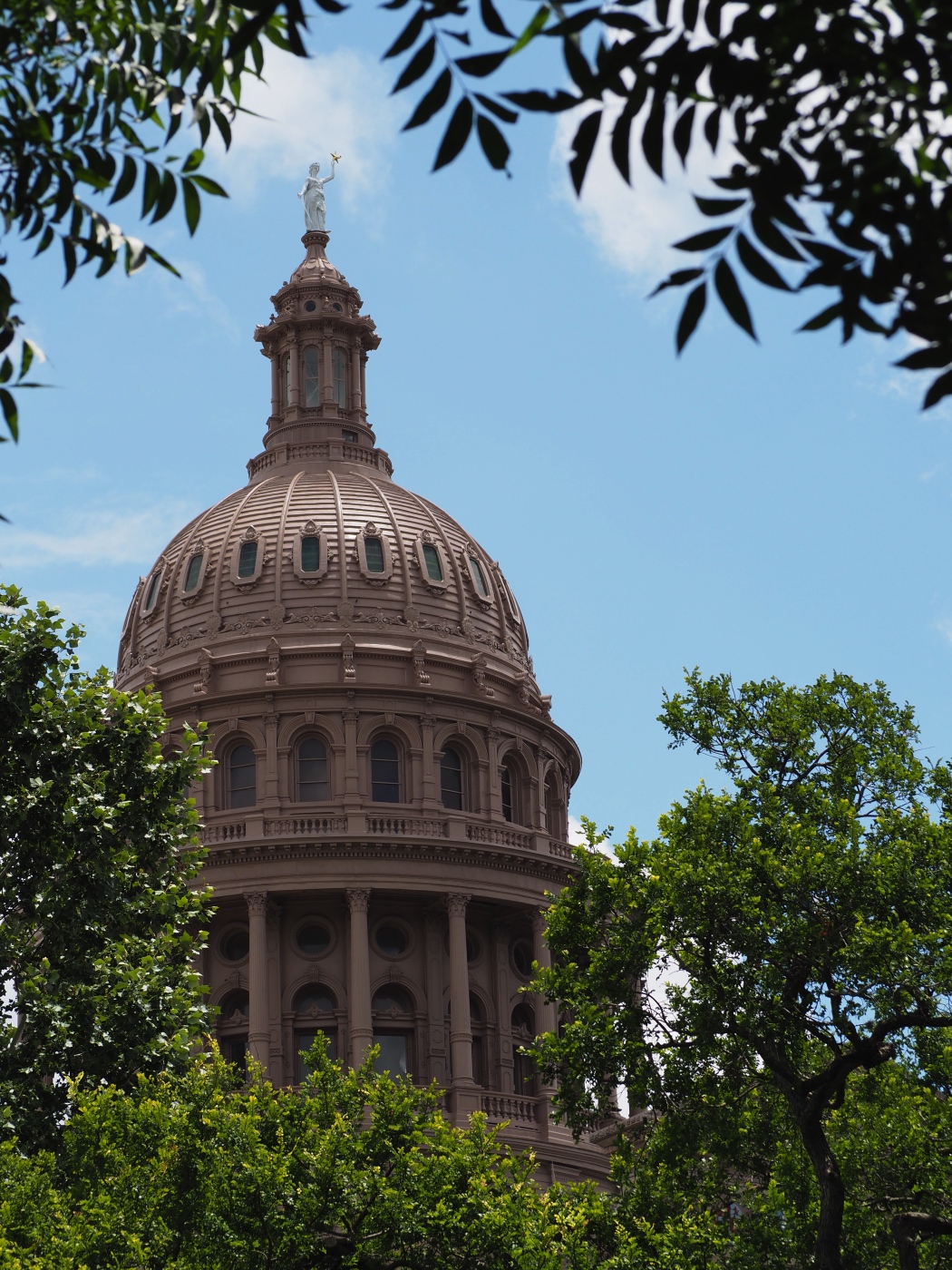
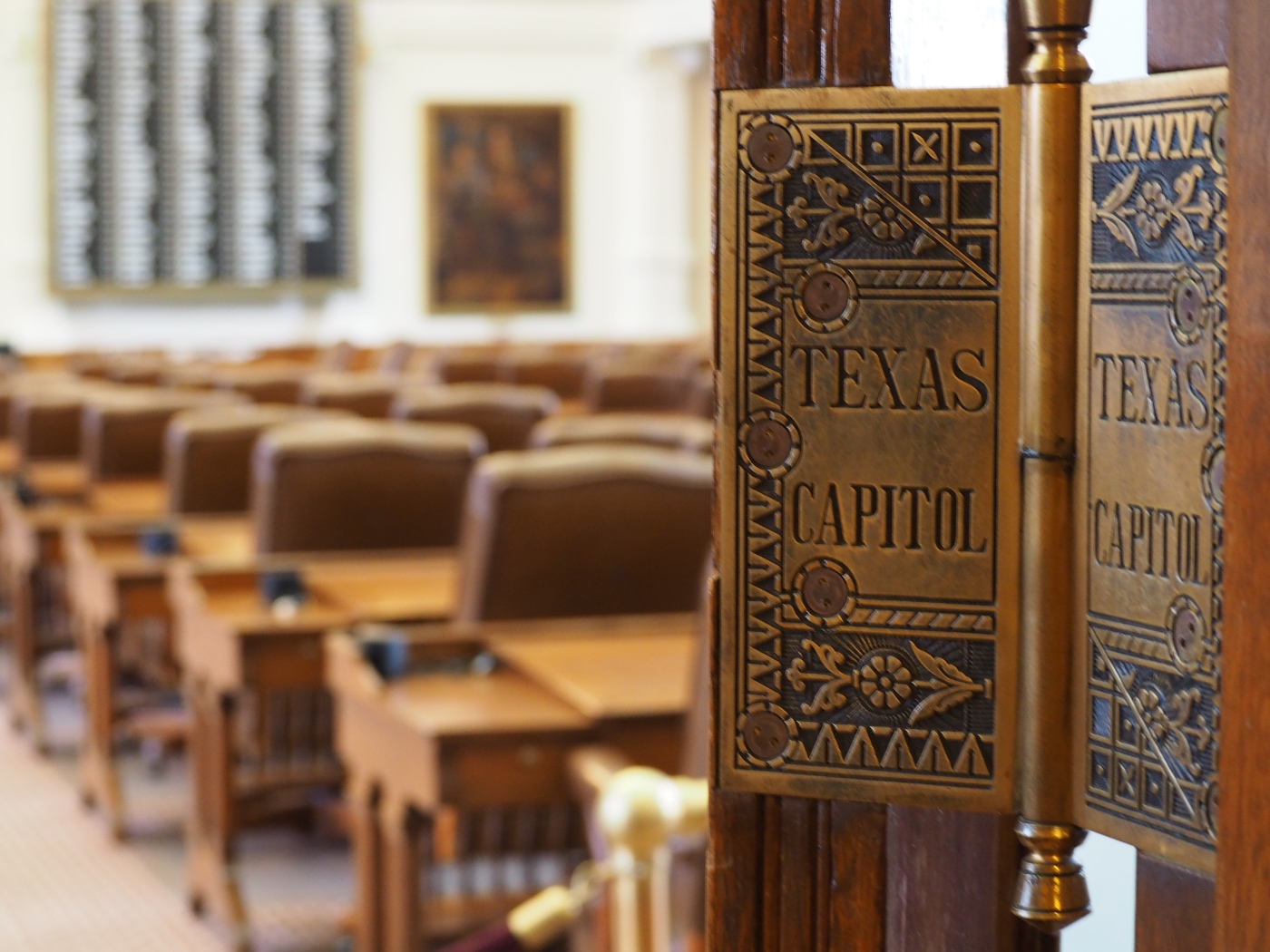




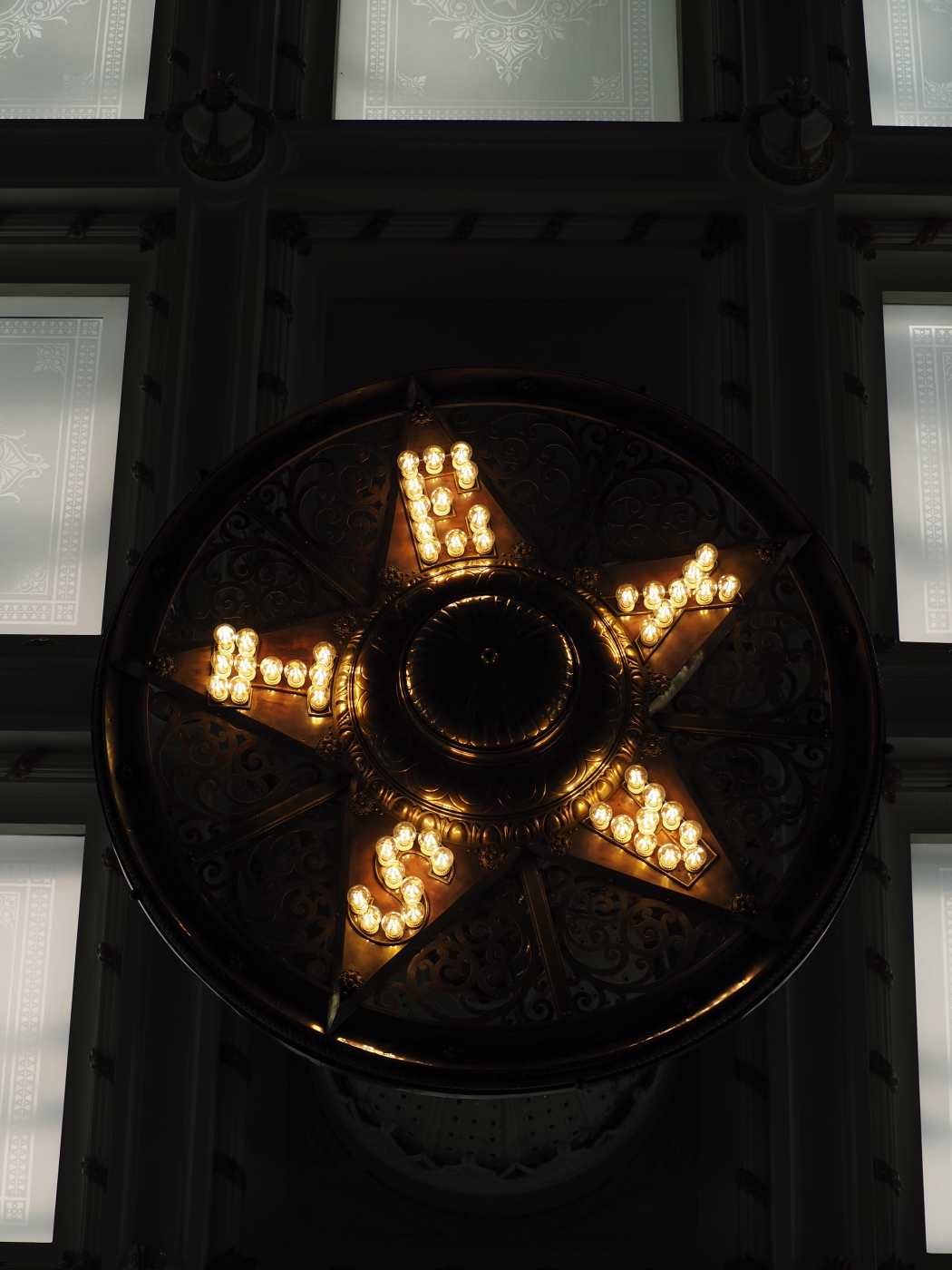
"So there's a technology scene in Austin?" I ask. Wrong question: I gather this is like asking a Vatican local if the town is a bit religious.
In fact I'm here for a conference with a tech dimension, on 'smart cities,' and the bar is my pit-stop before a reception downtown. I needed a hangover cure following last night's Sixth Street expedition, hence the roast chicken and white wine. My neighbour tells me his backstory: raised in California and joined the Army; served as a military intelligence officer in England (alongside a cast of blundering British Army characters worthy of Blackadder III); and moved here for the tech scene himself. We bond over our mutual incomprehension of Scottish accents. It's hard to tell if he is a billionaire.
For a first-time visitor to Austin, there is much to like. Hundreds of people gather on a bridge over the Colorado River each night to see one of the world's largest bat colonies take flight: their wings blacken the sky. Bars are packed with 20-30 somethings sporting beards and sun-tans, drinking but not heavily, and dancing Texas two-step. Food trucks are everywhere.
It doesn't feel like Texas in 2017, the year of the orange apocalypse, and I ask my new intelligence buddy to explain how Austin came to be like this. Of course he has a theory.
"First off, there is UT." The University of Texas. I walked through its campus today: large concrete blocks hum with air-conditioning, 1960s construction peeling slightly in the sun. Student activists hang 'gun-free campus' signs from dorm windows. There is a landmark tower with fine vistas down to the Capitol.
University of Texas looking down to the Capitol
"What you have to remember is that UT has shared faculty and researchers with Stanford since the 1960s. Helped it become very strong especially in EE." (Electrical engineering.)
So a lot of the Keep Austin Weird mentality germinates from the student community. But it's more than that.
"The link between Austin and Silicon Valley has basically been our version of the medieval Silk Road between Europe and China," says my intel buddy, tucking into more California red.
"People travel it, trade, deposit things of value. We call the San Francisco to Austin flight the Nerd Bird: kids tapping laptops all the way. Then they want to work here, enjoy the music, have a house you can actually afford."
"Right, an apartment costs about $4,000 in San Francisco now?" I ask.
"Right-on, man." Seventy-year olds in Austin/California talk like this. God be praised.
"Here: you can see why the scene grew," he adds.
The rain is now a monsoon drizzle and I have free drinks the other side of town, so we shake hands, say God Save the Queen, and I head on.
Stopping by the souvenir shop next door, in this island of blue and blues, the only Republican reference I see is a TV shirt saying "Make Austin Weird Again." From what I can see, Austin and its weirdness are doing just fine.
